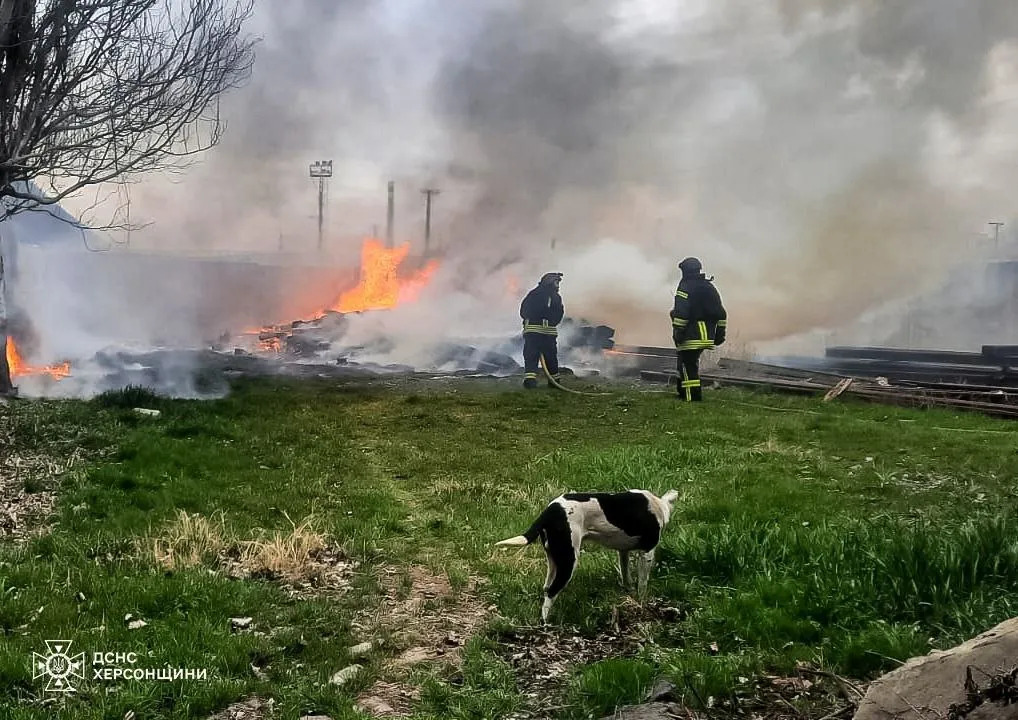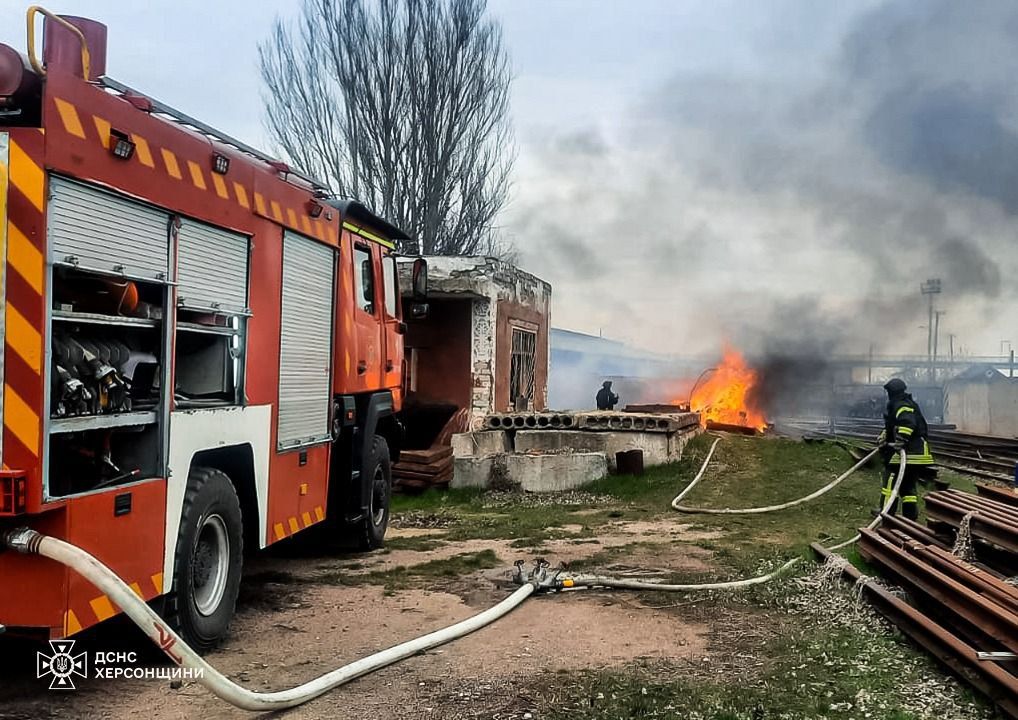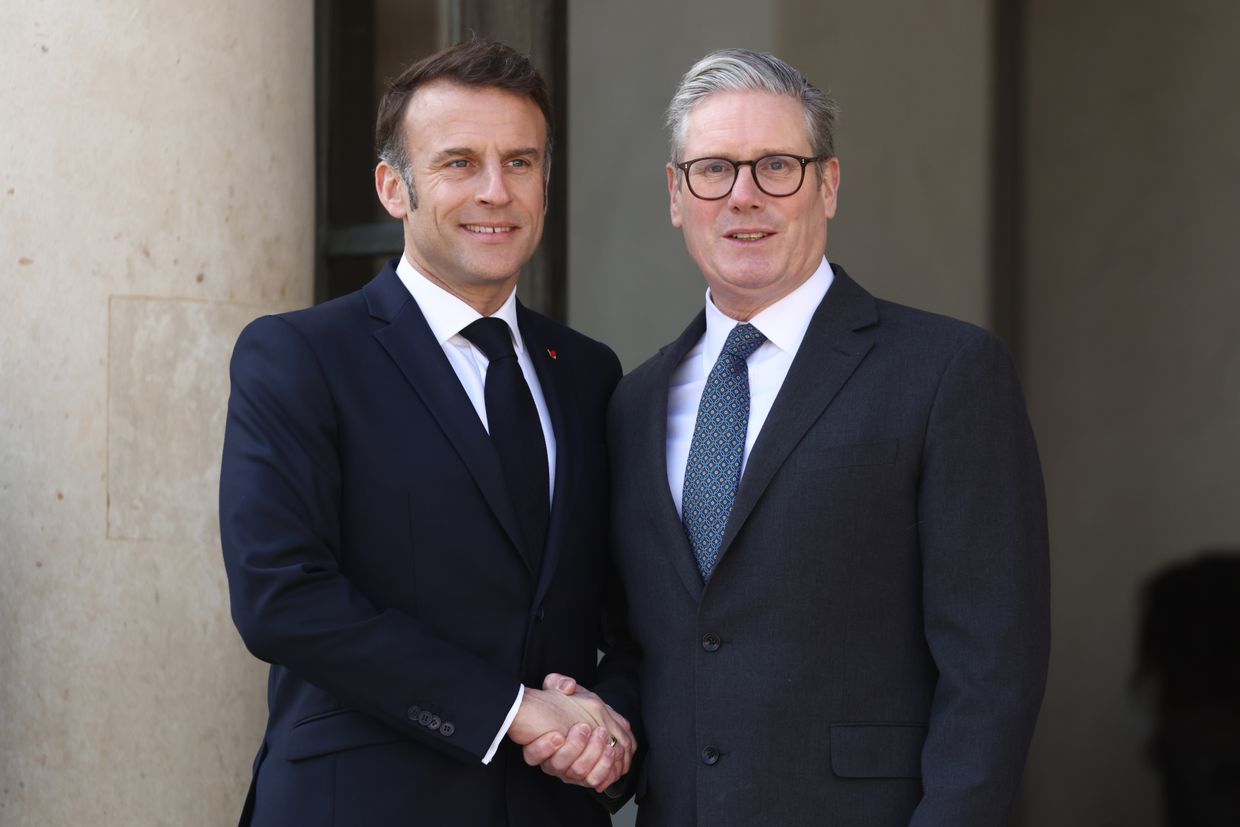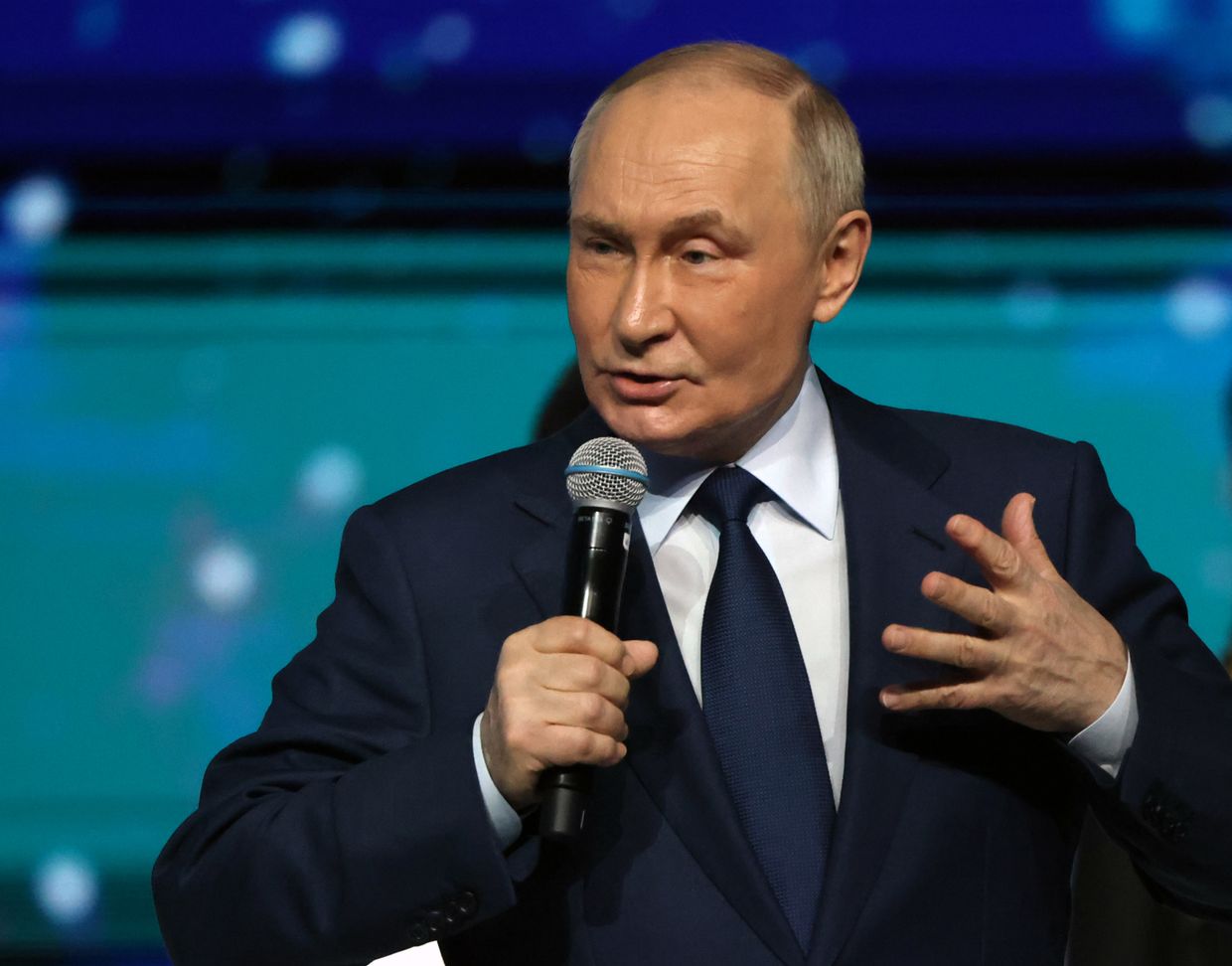As European Coalition of the Willing Forms in Paris, Moscow Violates Energy Infrastructure Agreement in Kherson While Putin Calls for UN-Supervised Elections in Ukraine
Summary of the Day — March 27, 2025
The first tentative ceasefire agreement between Russia and Ukraine collapsed within days of its signing as Russian forces struck energy infrastructure in Kherson on March 27, violating the terms of the U.S.-brokered deal. President Volodymyr Zelensky immediately called for American action in response to the breach, while European leaders gathered in Paris to forge a “Coalition of the Willing” that could potentially deploy troops to Ukraine regardless of Washington’s involvement. Meanwhile, Vladimir Putin demanded a temporary Ukrainian government under UN supervision to hold elections, seeking to delegitimize Kyiv’s current leadership. In a significant military milestone, Ukrainian Commander-in-Chief Oleksandr Syrskyi revealed that Russian forces have suffered over 55,000 casualties since Ukraine’s Kursk operation began, while separately confirming that a pivotal March 20 Ukrainian drone strike on Russia’s Engels Airbase destroyed 96 cruise missiles intended for upcoming attacks.
 The aftermath of a Russian attack on the city of Kherson, Ukrainе. (State Emergency Service)
The aftermath of a Russian attack on the city of Kherson, Ukrainе. (State Emergency Service)
Truce in Tatters: Russian Strike on Kherson Energy Infrastructure Violates Ceasefire Agreement
The fragile ceasefire on energy infrastructure strikes disintegrated on March 27 when Russian forces attacked the power grid in Kherson, killing two people and injuring at least five others, according to Ukraine’s State Emergency Service. The assault also damaged the railway station, water supply facilities, and a train carriage.
 The aftermath of a Russian attack on the city of Kherson, Ukraine. (State Emergency Service)
The aftermath of a Russian attack on the city of Kherson, Ukraine. (State Emergency Service)
“The city of Kherson is a civilian city, it is not a battlefield. I believe that there should be a reaction from the United States, in actions,” President Zelensky said at a press conference in Paris, where he tasked Defense Minister Rustem Umerov with providing the American side evidence of Russia’s violation.
The attack came just two days after both sides announced a U.S.-brokered agreement to halt strikes against energy infrastructure, raising serious questions about Moscow’s commitment to the deal. Earlier that same day, Ukrainian Foreign Ministry spokesperson Heorhii Tykhyi had told reporters that neither side had struck energy facilities since the March 25 agreement took effect. “I can confirm that since this date, March 25… There have been no attacks on energy objects. Neither Russian attacks on our energy objects, or our attacks on Russian energy objects,” Tykhyi stated.
Moscow has attempted to retroactively date the ceasefire to March 18, claiming it had unilaterally paused such strikes following Putin’s call with U.S. President Donald Trump. “The date, March 18, is purely invented by the Russian side, as Russian propaganda,” Tykhyi said, noting that Russia carried out at least eight attacks on Ukrainian energy facilities between March 18 and 25.
Putin’s Electoral Demands: Russian President Calls for UN-Supervised Ukrainian Elections
In a provocative statement clearly aimed at undermining Ukraine’s sovereignty, Russian President Vladimir Putin called for the introduction of a temporary government in Ukraine under United Nations supervision to hold new elections. “It is still not clear with whom to sign certain documents, and it is still not clear what power they have, because tomorrow other leaders will come… through elections,” Putin claimed.
Putin asserted that elections could be held under outside monitoring “to bring to power a capable government that enjoys the people’s trust,” while falsely claiming Ukraine’s current authorities are illegitimate since elections were not held when President Zelensky’s term expired. “If he himself (Zelensky) is illegitimate, then all the others are too,” Putin alleged.
Ukraine’s constitution explicitly prohibits elections during martial law, which has been in place since Russia’s full-scale invasion in February 2022. Despite Putin’s attempts to delegitimize the Ukrainian government, a recent poll by the Kyiv International Institute of Sociology found that 69% of Ukrainians trust President Zelensky, with only 28% expressing distrust, resulting in a trust-distrust balance of +41%.
Coalition of the Willing: European Powers Plan Military Force in Ukraine
Leaders from 31 countries convened in Paris for a summit focused on coordinating military aid for Ukraine and discussing the potential deployment of a “reassurance force” on Ukrainian soil, even without U.S. involvement. French President Emmanuel Macron announced that several European countries have moved forward with plans to send troops to Ukraine if a ceasefire with Russia is reached.
 President Volodymyr Zelensky, France’s President Emmanuel Macron and U.K. Prime Minister Keir Starmer speak during a trilateral meeting on the sidelines of a summit for “Coalition of the Willing” in Paris. (Photo by Ludovic Marin/Pool/AFP via Getty Images)
President Volodymyr Zelensky, France’s President Emmanuel Macron and U.K. Prime Minister Keir Starmer speak during a trilateral meeting on the sidelines of a summit for “Coalition of the Willing” in Paris. (Photo by Ludovic Marin/Pool/AFP via Getty Images)
“It does not have unanimity, but we do not need unanimity to do this,” Macron said, adding that Europe will send its troops to Ukraine “with or without the U.S.” The initiative, co-led by France and the UK, will see both countries sending military delegations to Ukraine in the coming days to discuss logistics.
France is pushing for the deployment of a Europe-led force somewhere along the Dnipro River in central Ukraine, away from the front line, though other options include positioning forces in Ukraine’s west or in a neighboring country. British Prime Minister Keir Starmer characterized the potential force as “designed to deter, in order to send that message to Putin that this is a deal that is going to be defended.”
 U.K. Prime Minister Keir Starmer is greeted by French President Emmanuel Macron ahead of the “coalition of the willing” summit in support of Ukraine in Paris, France. (Tom Nicholson/Getty Images)
U.K. Prime Minister Keir Starmer is greeted by French President Emmanuel Macron ahead of the “coalition of the willing” summit in support of Ukraine in Paris, France. (Tom Nicholson/Getty Images)
“We agreed here in Paris today that it’s clear the Russians are filibustering. They are playing games, and they’re playing for time,” Starmer said. “It is a classic from the Putin playbook, but we can’t let them drag this out while they continue prosecuting their illegal invasion.”
German Defense Minister Boris Pistorius signaled Germany’s potential participation, stating, “I can’t imagine any situation in which Germany would not be participating in whatever would be the result of negotiations of a ceasefire or even a peace.”
Strategic Strike Success: Ukrainian Drone Attack Destroyed 96 Russian Cruise Missiles
Ukraine’s General Staff reported that a March 20 drone strike on Russia’s Engels-2 military airfield destroyed 96 air-launched cruise missiles and strategic fuel reserves, dealing a significant blow to Moscow’s strike capabilities. The missiles were intended for three planned attacks against Ukraine in March and April.
“Strikes on aviation fuel storage sites have led to the destruction of significant stocks, which negatively affects the Russian aggressor’s ability to support combat operations,” Ukraine’s General Staff reported. Located in Russia’s Saratov Oblast, over 450 kilometers from the Ukrainian border, Engels-2 is home to strategic bombers regularly used in missile attacks on Ukraine, including the Tu-95, Tu-22, and Tu-160.
The Tu-95, first flown in 1952, was originally designed for nuclear bombing missions but has since been adapted to launch cruise missiles. Each aircraft can carry up to 16 Kh-101, Kh-555, Kh-55, or Kh-102 missiles. Andrii Kovalenko, an official at Ukraine’s National Security and Defense Council, noted that many of the destroyed weapons were Kh-101 cruise missiles—the same type used by Russian forces in July 2024 to strike the Okhmatdyt Children’s Hospital in central Kyiv.
Heavy Russian Casualties: 55,000 Lost in Kursk Operation
Russian forces have suffered over 55,000 casualties since Ukraine launched its operation in Russia’s Kursk Oblast in August 2024, according to Ukrainian Commander-in-Chief Oleksandr Syrskyi. The staggering figure includes 22,200 killed in action and 31,800 wounded, with over 940 Russian soldiers captured.
Ukraine initially seized 1,300 square kilometers (500 square miles) of Russian territory in the cross-border incursion before Moscow, reinforced by North Korean units, launched a counteroffensive earlier this month. The Russian push coincided with a temporary pause in U.S. intelligence and military support for Ukraine, which resumed on March 11.
Meanwhile, South Korea’s Joint Chiefs of Staff reported that North Korea has transferred approximately 3,000 additional soldiers to Russia in January and February to compensate for battlefield losses. This brings the total North Korean deployment to at least 14,000 troops, of which roughly 4,000 have been killed or wounded, according to various intelligence sources.
Offensive Preparations: Zelensky Warns of Russian Spring Attack in Sumy and Kharkiv
President Zelensky warned that Russia is preparing for a new offensive in Sumy and Kharkiv oblasts this spring, attempting to delay ongoing peace negotiations to buy time for the operation. “We must look at the situation with our eyes wide open. Putin is preparing a new offensive, particularly in Sumy and Kharkiv oblasts,” Zelensky told French newspaper Le Figaro.
“I can confirm that Putin is trying to get time and is preparing for a spring offensive. We see preparations for this upcoming operation,” he added, noting that Putin had initially planned to launch this operation eight months ago but was forced to delay it due to Ukraine’s Kursk operation.
Sumy and Kharkiv oblasts, both located in northeastern Ukraine and bordering Russia, have played a key role in Ukraine’s defense since the start of the full-scale invasion. On March 15, Zelensky had already warned of Russian forces amassing along Ukraine’s northeastern border, stating, “We understand this and will take countermeasures.”
Ukrainian Commander-in-Chief Syrskyi visited forces in Sumy Oblast on March 27 and confirmed that Russian attacks in the region have intensified in recent days. During a March visit to the Kursk region, Putin suggested setting up a “buffer zone” in the Sumy region to prevent future Ukrainian incursions.
 Russian President Vladimir Putin speaks during the Movement of the First Youth Congress in Moscow, Russia. (Contributor/Getty Images)
Russian President Vladimir Putin speaks during the Movement of the First Youth Congress in Moscow, Russia. (Contributor/Getty Images)
Black Sea Ceasefire: Ukraine Cautiously Optimistic But Watchful
Ukraine believes the ceasefire on military action in the Black Sea is in effect but will closely monitor Russia’s actions to ensure compliance with the agreement, Foreign Ministry spokesperson Heorhii Tykhyi told journalists. The U.S., Russia, and Ukraine agreed to “eliminate the use of force” and prevent commercial vessels from being used for military purposes in the Black Sea following two-day talks in Saudi Arabia.
“Russia’s movement of warships beyond the eastern part of the Black Sea will be considered a violation of these agreements and will be regarded as a violation of the obligations to ensure free navigation in the Black Sea,” the spokesperson emphasized. Tykhyi clarified that the Black Sea truce applies to civilian shipping and Ukrainian ports but does not cover Russian warships.
The Kremlin previously stated the ceasefire would take effect only if Western sanctions on Russian food producers, exporters, and financial institutions are lifted and if Russia is reconnected to the SWIFT payment system. However, Tykhyi insisted that Ukraine and the U.S. didn’t agree on lifting any sanctions from Russia as part of the deal.
Washington’s Limited Leverage: Trump’s Negotiation Approach Under Scrutiny
As peace talks between Ukraine, Russia, and the United States continue to stall, experts are questioning U.S. President Donald Trump’s negotiation strategy. Marty Latz, author of “The Real Trump Deal: An Eye-Opening Look at How He Really Negotiates,” observed that Trump appears to be using the same tactics that “miserably failed” during his first term.
“From President Trump’s perspective, as it relates to the Ukraine-Russia war situation, he just wants a deal. I don’t really believe that President Trump wants anything other than a deal,” Latz explained. “I don’t think he cares so much about the details of the deal as long as he will get the international credit for bringing the parties together and stopping the hostilities.”
Critics note that Trump has primarily exerted pressure on Ukraine while showing reluctance to use America’s leverage against Russia, such as through economic sanctions. When asked on March 25 whether he believes Russia “wants to see an end” to the full-scale war, Trump admitted, “I don’t know. I mean, I’ll let you know at a certain point. But I think that Russia wants to see an end to it, but it could be they’re dragging their feet.”
Dragging Feet or Buying Time: Intelligence Reports Suggest Russian Delaying Strategy
Russia may be deliberately prolonging peace talks to seize more territory and strengthen its negotiating position, according to reports citing Russian officials. Moscow apparently believes that time is on its side, with a U.S. intelligence assessment concluding that both Russia and Ukraine may see greater incentive to prolong the war rather than settle for what each side would view as an unfavorable peace deal.
On the battlefield, Russia continues to press its advantage in several sectors of the front. Russian forces have recently advanced in Kursk Oblast, capturing the key town of Sudzha and pushing into northern Sumy Oblast. Geolocated footage indicates that elements of the Russian 51st and 137th airborne regiments recently seized Gogolevka, Kursk Oblast, and the Sudzha border checkpoint, while also advancing in northeastern Basivka, Sumy Oblast.
Russian forces have also made gains near Lyman, along the O0524 highway northwest of Toretsk, and in western Zaporizhia Oblast. Meanwhile, Ukrainian forces have marginally advanced east of Borova, in central Oleksandropil southwest of Toretsk, and to a windbreak southeast of Kostyantynopil west of Kurakhove.
North Korea’s Drone Arsenal: Kim Jong Un Showcases AI-Powered Suicide Drones
North Korea has showcased what it claims is its first artificial intelligence-powered suicide drone, as well as its first airborne early-warning radar system, North Korean state media reported. The Korean Central News Agency released images of the drones and aircraft, reporting that North Korean leader Kim Jong Un personally inspected them.
“The field of unmanned equipment and artificial intelligence should be top-prioritized and developed in modernizing the armed forces,” Kim reportedly said. The state media released photographs purporting to show the testing of the drone, including images of it flying into a tank-shaped object and then exploding.
North Korea has emerged as a key military ally of Russia, supplying Moscow with artillery shells, missiles, and thousands of troops in exchange for oil products and advanced rocket technology. Officials estimate that up to 12,000 North Korean troops were initially deployed to Russia’s Kursk Oblast since last fall, with approximately 3,000 additional soldiers sent in early 2025 to replace heavy losses.
Drone Warfare Evolves: Ukraine Approves “Bird of Prey” System for Combat
Ukraine’s Defense Ministry announced the approval of a domestically produced “Bird of Prey” unmanned aviation system for combat operations. Developed based on battlefield experience, the system is optimized for strikes against enemy vehicles and fortified positions.
The drones are equipped with payloads capable of striking heavy equipment such as tanks, armored personnel carriers, and self-propelled artillery, as well as fortified dugouts. “The Bird of Prey has already proven its effectiveness in destroying enemy armored vehicles and fortified firing positions,” the ministry stated.
This approval builds on Ukraine’s expanded domestic drone production, with Kyiv integrating drones into reconnaissance and combat operations. President Zelensky has set a target of producing at least 30,000 long-range drones in 2025, recognizing their critical importance in the evolving battlefield environment.
Ukrainian F-16 Operations: Pilot Reveals Capabilities and Limitations
In what was billed as the first-ever interview with a Ukrainian F-16 pilot, Ukraine’s Air Force released insights into the operational realities of the Western-supplied aircraft. The unnamed pilot praised the jets, noting that contrary to media reports, pilots have experienced no problems receiving real-time intelligence data.
“Almost every missile hits its target,” the pilot said. “More than 80 percent of the missiles we launch hit their targets, destroying both Shahed drones and cruise missiles launched from sea, air, and land.”
The pilot explained that F-16 pilots fly multiple ground attack missions each day over Russia and occupied Ukrainian territories while also conducting offensive counter-air missions to protect colleagues operating Soviet-era aircraft. However, the pilot admitted one significant limitation: the F-16s cannot get close enough to destroy Russian bombers employing guided aerial munitions from inside Russian airspace.
“Our main focus right now is on Russian use of guided aerial bombs. Not all [zones] are fully covered, but we do our best to complete missions in these areas. We understand that we cannot get close enough to destroy the carriers of these bombs,” the pilot explained, noting that electronic warfare measures and improved detection capabilities are being employed to counter these threats.
Cyber Defense Strengthened: Ukraine Passes New Security Law
Ukraine’s parliament, the Verkhovna Rada, passed a bill aimed at strengthening the country’s cyber defense capabilities and protecting state information resources. The new law introduces a national system for responding to cyberattacks and incidents, including the creation of cyber defense units within state institutions and critical infrastructure.
The legislation establishes national, sectoral, and regional response teams aligned with the EU’s NIS2 directive and clearly defines roles during cyber crises to ensure quick, coordinated action. Law #11290 aligns Ukraine’s cybersecurity framework with European standards and represents a direct response to ongoing cyber threats, including a recent attack against Ukrainian Railways (Ukrzaliznytsia) on March 24.
Russia has regularly targeted Ukrainian companies and government institutions with cyberattacks since the onset of its full-scale invasion. The new system will be overseen by the State Service for Special Communications and Information Protection, which will ensure consistent standards are applied at all levels of government.
Ukrzaliznytsia announced on March 27 that it had resumed online ticket selling services after what it described as the “largest cyberattack” the company had ever suffered, though temporary service interruptions continued due to high user volume.
Sanctions Relief Standoff: EU Takes Hard Line Against Russian Demands
The European Union has definitively stated it will not lift or amend sanctions against Russia before the “unconditional withdrawal” of Moscow’s forces from Ukraine. European Commission spokesperson Anitta Hipper emphasized that sanctions would only be reconsidered if Russia “end[s] its unprovoked aggression in Ukraine” and withdraws completely from Ukrainian territory.
The statement came in response to the Kremlin’s demand that Western sanctions on its agricultural sector be lifted before it would implement the Black Sea ceasefire agreement. Moscow specifically wants measures lifted against Rosselkhozbank, Russia’s state-owned agricultural bank, and other financial organizations involved in international food and fertilizer trade.
Both French President Emmanuel Macron and British Prime Minister Keir Starmer reiterated at the Paris summit that now is not the right time to lift sanctions from Russia. German Foreign Minister Annalena Baerbock was even more direct, stating, “It is not a situation for dialogue when a ceasefire is repeatedly tied to concessions and new demands… we must not be deceived by the Russian president.”
Meanwhile, the EU introduced new sanctions against Belarus on March 27, targeting 25 individuals and seven entities for undermining democracy, violating human rights, and supporting Russia’s war against Ukraine. The measures include sanctions against judges who issued politically motivated sentences, Belarus’s Election Commission, and several companies involved in the Belarusian military-industrial complex.
Looking Ahead: Critical Days for Ukraine’s Future
As March draws to a close, Ukraine faces critical decisions that will shape its future trajectory in the war. The collapse of the energy infrastructure ceasefire within days of its signing demonstrates the fundamental challenge of reaching any meaningful agreement with Moscow while Russian forces continue their advance in eastern Ukraine and prepare for a potential spring offensive in the northeast.
European leaders have shown a surprising willingness to fill the void left by America’s inconsistent support, planning troop deployments that could eventually form a significant deterrent force on Ukrainian soil. The question remains whether this evolving “Coalition of the Willing” can sufficiently strengthen Ukraine’s position to force a genuine Russian commitment to peace negotiations.
For Ukrainian civilians, the daily reality remains one of drone attacks, missile strikes, and artillery bombardments—a stark reminder that despite diplomatic maneuvers and partial ceasefire agreements, the war continues at full intensity. As one Ukrainian commander observed regarding the continued high-level negotiations: “Until we implement reforms, until we remove the Soviet mindset from our army and until we start fighting effectively, relying on Western partners is pointless.”
